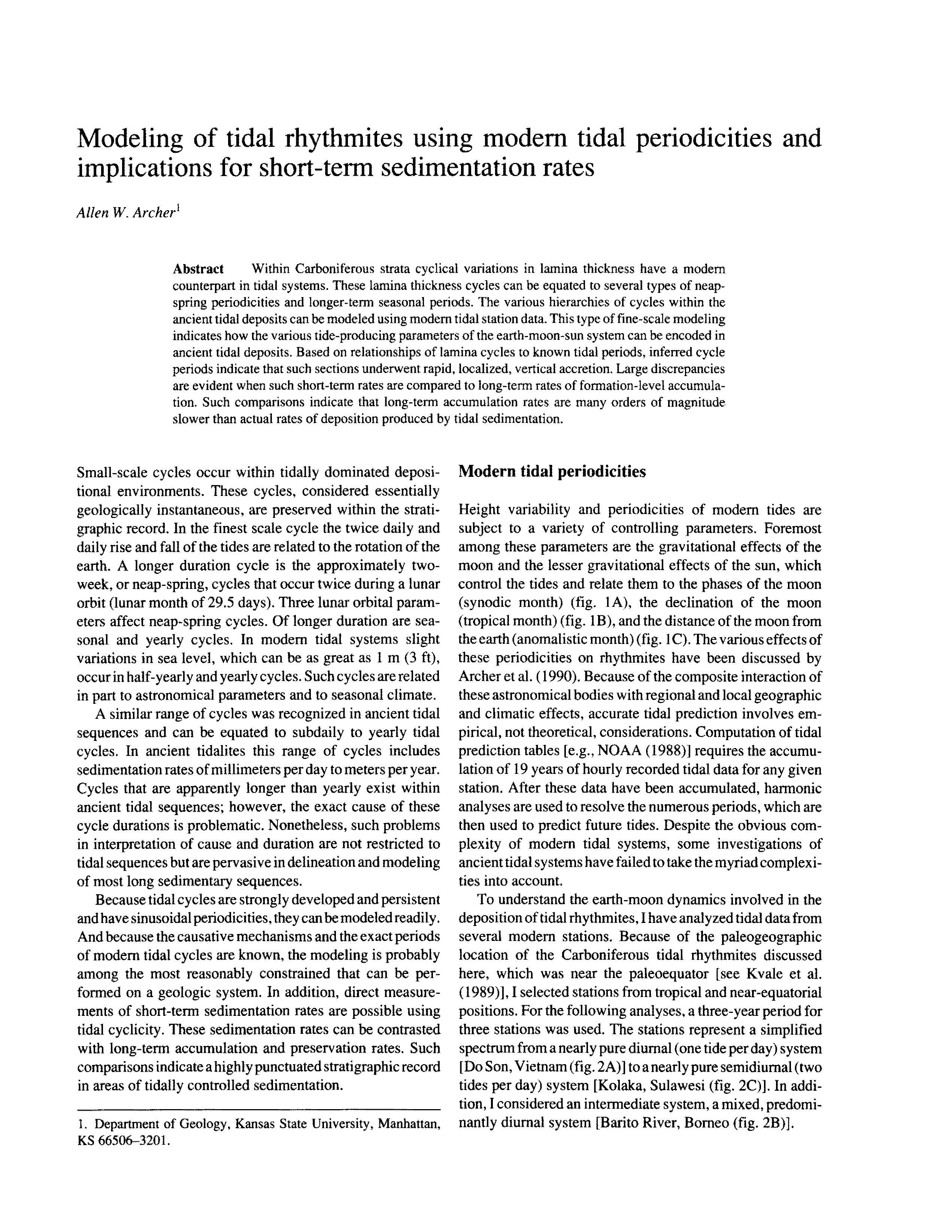Modeling of tidal rhythmites using modern tidal periodicities and implications for short-term sedimentation rates
DOI:
https://doi.org/10.17161/kgsbulletin.no.233.20457Abstract
Within Carboniferous strata cyclical variations in lamina thickness have a modern counterpart in tidal systems. These lamina thickness cycles can be equated to several types of neap-spring periodicities and longer-term seasonal periods. The various hierarchies of cycles within the ancient tidal deposits can be modeled using modern tidal station data. This type of fine-scale modeling indicates how the various tide-producing parameters of the earth-moon-sun system can be encoded in ancient tidal deposits. Based on relationships of lamina cycles to known tidal periods, inferred cycle periods indicate that such sections underwent rapid, localized, vertical accretion. Large discrepancies are evident when such short-term rates are compared to long-term rates of formation-level accumulation. Such comparisons indicate that long-term accumulation rates are many orders of magnitude slower than actual rates of deposition produced by tidal sedimentation.
Downloads

